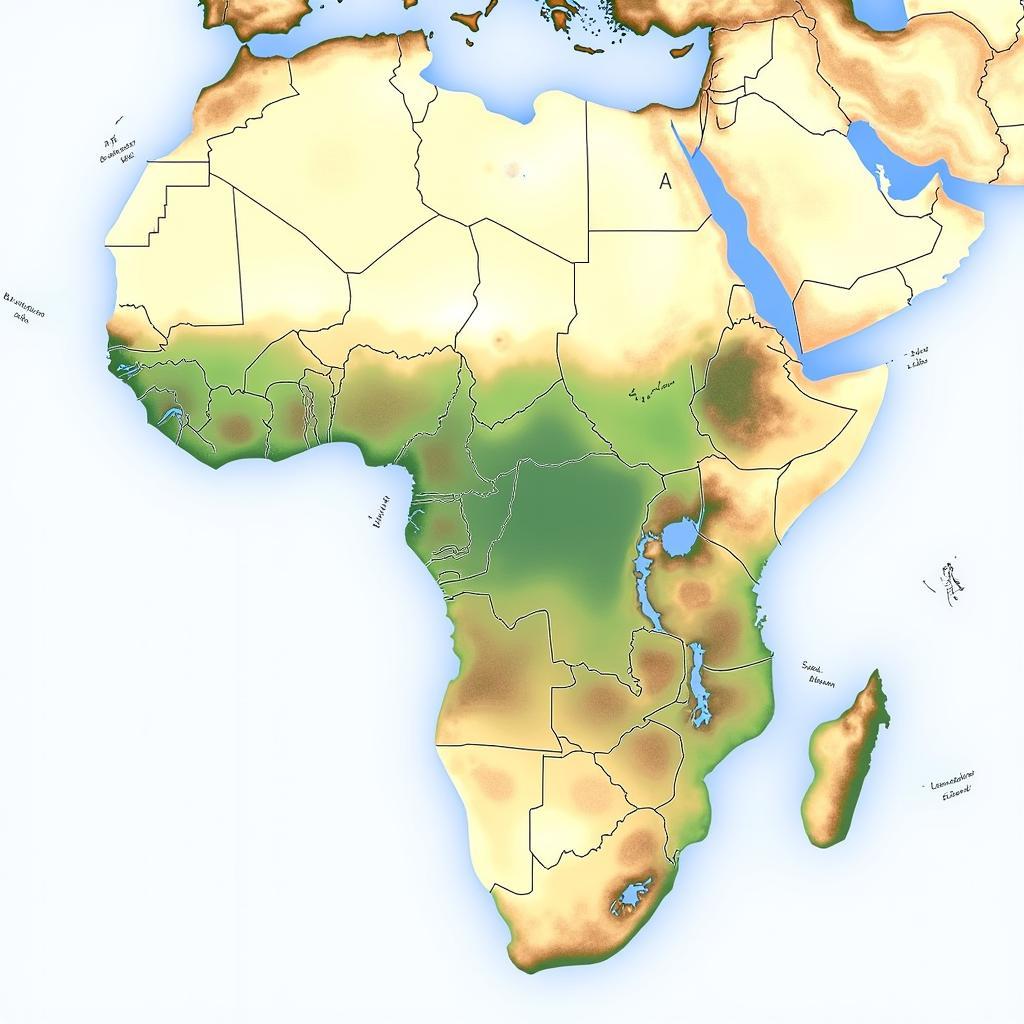African Elephant Habitat Countries: A Comprehensive Guide
African Elephant Habitat Countries are primarily located in sub-Saharan Africa. These majestic creatures roam across diverse landscapes, from savannas and grasslands to forests and deserts. Understanding their habitat is crucial for conservation efforts.
Exploring the Range of African Elephant Habitats
African elephants, the largest land mammals on Earth, require vast territories to thrive. Their habitat needs to provide sufficient food, water, and shelter. While their range has shrunk significantly due to human activities, they can still be found in a variety of ecosystems across the continent. This includes countries like Botswana, Kenya, Tanzania, and South Africa, which are renowned for their thriving elephant populations. These countries have implemented various conservation strategies to protect these gentle giants.
Key African Elephant Habitat Countries and Their Ecosystems
Several countries stand out as key strongholds for African elephants, each offering unique ecosystems that cater to the elephants’ needs. Botswana, with its vast Okavango Delta and Chobe National Park, provides an ideal habitat for large herds. Kenya’s diverse landscapes, from the savannas of Amboseli National Park to the forests of Mount Kenya, support diverse elephant populations. Tanzania, home to the iconic Serengeti National Park and the Ngorongoro Crater, boasts a significant elephant population. South Africa, with its well-managed Kruger National Park, offers a safe haven for these majestic creatures. Learning more about the african elephant and asian elephant differences can provide valuable insights into the specific needs of each species.
Threats to African Elephant Habitats
Unfortunately, African elephant habitats face numerous threats, primarily due to human activities. Habitat loss and fragmentation due to expanding human settlements and agriculture are among the most significant challenges. Poaching for african ivory remains a persistent threat, driving down elephant populations in several regions. Human-wildlife conflict, often resulting from elephants raiding crops, also poses a significant challenge. Climate change further exacerbates these issues by altering rainfall patterns and increasing the frequency of droughts. These challenges require concerted efforts from governments, conservation organizations, and local communities to ensure the long-term survival of African elephants. You can find more information about these critical issues on the african crisis website.
Understanding the Importance of Conservation
Conserving African elephant habitats is crucial not only for the survival of these magnificent animals but also for the health of the entire ecosystem. Elephants play a vital role in shaping their environment, creating pathways through dense vegetation and dispersing seeds. Their presence supports a wide range of other species and contributes to the overall biodiversity of the region. Protecting their habitats also benefits local communities through tourism and other economic activities.
What countries are African forest elephants found in?
African forest elephants, a distinct subspecies, are primarily found in the dense rainforests of Central Africa, including countries like the Democratic Republic of Congo, Gabon, and Cameroon. You can learn more about their specific habitat in the DRC by visiting african forest elephant drc.
“Protecting elephant habitats is not just about saving a species, it’s about preserving the intricate web of life that sustains entire ecosystems,” says Dr. Anika Malima, a renowned wildlife biologist specializing in African elephant conservation. She emphasizes the importance of community-based conservation initiatives in ensuring the long-term success of these efforts.
Conclusion
African elephant habitat countries face complex challenges in balancing human needs with wildlife conservation. Understanding the distribution and ecological needs of these magnificent creatures is essential for effective conservation strategies. By working together, we can ensure that African elephants continue to roam the savannas, forests, and deserts of Africa for generations to come. For a visual representation of their current range, you can refer to the african elephant map.
“The future of African elephants depends on our collective commitment to protecting their habitats and combating the threats they face,” adds Dr. Joseph Nyerere, a leading expert in African wildlife management.
FAQ
- What is the biggest threat to African elephants? Habitat loss and poaching.
- Where do most African elephants live? Sub-Saharan Africa.
- What do African elephants eat? Primarily grasses, leaves, bark, and fruits.
- How long do African elephants live? Around 60-70 years in the wild.
- How can I help protect African elephants? Support conservation organizations, spread awareness, and choose sustainable tourism options.
- What is the difference between African bush elephants and African forest elephants? Forest elephants are smaller, have straighter tusks, and live in dense forests, while bush elephants are larger, have curved tusks, and live in savannas and grasslands.
- Are African elephants endangered? The African savanna elephant is listed as Endangered and the African forest elephant is listed as Critically Endangered.
When you need support, please contact Phone Number: +255768904061, Email: kaka.mag@gmail.com or visit us at: Mbarali DC Mawindi, Kangaga, Tanzania. We have a 24/7 customer service team.

